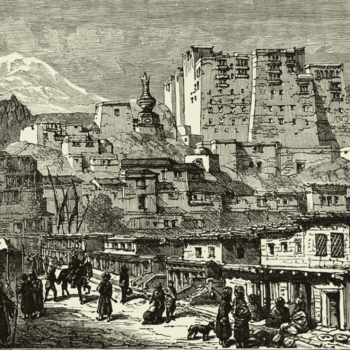
Let’s Get Into It: The ‘Religion and Pop Culture’ section delivers hot religious takes on the films, books, songs, television shows, video games, and other forms of entertainment that drive our society, and deserve a second look.
If you’re a film buff, you will know that there are many films imbued with Christ-like imagery. The common set of characteristics is that the protagonist is usually the redemptive figure of the narrative, whose sacrifice is essential for the salvation of the rest of the characters. This person is also often given a humanistic outlook and compassionate qualities. Typically, they are treated as an outsider and, usually succumb to a huge amount of physical and/or mental suffering. The Matrix is a good example of this, where Neo is called ‘The One’ and prophesied to save mankind with his sacrifice. A fellow hacker actually says to Neo, “Hallelujah! You’re my saviour, man. My own personal Jesus Christ!” But you can see the vestiges of this story everywhere. In Superman, Jor-El sends his child to Earth to save mankind, making the character of Clark Kent something of a cinematic Christ-figure.
The Wrestler fits this trope like a glove. Starring Mickey Rourke, the film was released January 23rd, 2008 and, as such, recently surpassed its 13th year anniversary. Directed by Darren Aronofsky (Black Swan, Requiem for a Dream), it details the life of Robin Ramzinki, otherwise known in the professional wrestling industry as “Randy ‘The Ram’ Robinson.” For any viewer who is somewhat theologically attuned, it’s also rife with Christian imagery, motifs and symbolism. Let’s unpack them!
The opening sequence of the film shows Randy at the top of his game, with credits detailing his previous feats, from infamous matches to record-breaking events. The next image cuts to Randy hunched over, coughing, and gulping down pain medication twenty years later. Randy, once the face of the wrestling world, is now living in a trailer park, working a part time job and still desperately pursuing wrestling on the independent circuit. Despite his age and increasingly worrying health concerns, he is still chasing the dragon, creating an ever-widening gap between himself and his estranged daughter, Stephanie.
As the film progresses, it becomes clear that Randy is suffering for the sake of his fan base. The suffering itself is front and center. One of the most striking visual aspects of the film is the hyperrealism, or the way that Aronofsky emphasizes the physical pain and torture that Randy endures. Each punch to the face is done in slow motion, close-up and in vivid color, the agony undeniable. We see the blood flying, we hear the bones crunching, the ligaments twisting. In one scene we see the fans hurling insults and jeers at the ring as he and his opponent become increasingly bloody and bruised, soon barely able to stand. The cheering demand for more never stops.
This focus on physical suffering works as a further theological reference because the film has already worked to associate Randy with Christ. Before this fight, we see that Randy has a tattoo of Christ hidden beneath his long, flowing hair. His girlfriend, Cassidy, even mentions that Randy has the same hair as Jesus. The scene following this one has Randy and Cassidy out shopping at a local thrift store, and the phrase, “Jesus Es El Senor” (or “Jesus is Lord”) can be read on a storefront behind Randy. It could be a simple location coincidence, but in the context of their shopping trip, where they are literally looking for something, the film seems to suggest a possible answer to what Randy needs.
These allusions come together strongly at the end of the film. In the final scene, on his way out to the ring for his farewell match, there is an overt reference to the “Stations of the Cross.” Firstly, he is condemned to die by his healthcare professional, who assures him that if he participates in this final match, he could put himself at serious risk of death. He is made to bear the cross (in a metaphorical sense), and he makes the sign of the cross just before he leaves the dressing room. Just as the women of Jerusalem weep over Jesus, Cassidy weeps for Randy, and on his way to the match, he stumbles getting into the ring. He strips off his wrestling attire, just as Jesus was stripped of his garments. Lastly, in the culmination of the match, he metaphorically puts himself onto the cross, as he stands tall on the top rope, in the crucifix position, the moment and position accentuated by the filming techniques of Aronofsky.
His walk-out song is Gun’s and Roses “Oh Sweet Child of Mine,”—a possible allusion to the fact that, in this context, Randy represents the Son of God. Randy also gives an impassioned speech, affirming his desire to suffer in order to provide salvation to those who come and see him: “You people here are the ones worth bringing it for, because you’re my family. I love all of you.” It fades to black as he jumps from the top rope, to perform his signature dive, the “Ram Jam” (a flying headbutt in the formation of the cross). For the well-versed viewer, it’s hard not to see Randy as the epitome of the “suffering servant” detailed in Isaiah 53.
Of course, the iconography of The Ram is also a significant one. It represents Randy’s status as a sacrifice, as in the “Binding of Isaac,” where the Biblical character of Abraham finds a ram to sacrifice in place of his son Isaac (Genesis 22:13). The associations between Randy and Christ give new meaning to the physical pain pervasive throughout the film. One author, Pete Peterson, notes that “[Randy] cuts himself in the ring (a standard industry practice known as ‘blading’), and…he lets another wrestler use a staple gun on him, as well as tear him with barbed wire. Through it all the Ram comes up smiling as if with each cut and each drop of blood he can somehow atone for his disastrous life outside the ring.”
Nowhere is the connection to Jesus more evident, however, than in the scene in which we meet Randy’s love interest, Cassidy, played by Marisa Tomei. Cassidy works at a strip club and, whilst consoling Randy, she exclaims; “Jesus, you're bleeding!” She then recites Isaiah 53 –
“He was pierced for our transgressions, He was crushed for our iniquities. The punishment that brought us peace was upon him; And by his wounds we were healed.”
Aronofsky is primarily tackling the subject of professional wrestling, and the common lifestyle that many wrestlers find themselves in after their career has declined but, in doing so, he is employing Christian imagery in an extremely interesting way. At first glance, professional wrestling doesn’t seem as though it would be conducive to exploring Christian motifs. However, “The Wrestler” establishes the fact that you can find Christian symbolism in places you would least expect it. In a film about professional wrestling, Aronofsky has also somehow managed to explore salvation through suffering, Christian notions of pain, and the classic cinematic trope of the Christ figure.
Oliver-James Campbell is a freelance journalist, with a BA in Religion, Philosophy and Ethics, and an avid interested in all things theology, philosophy and how they intersect with pop culture.
4/26/2021 12:04:31 PM




